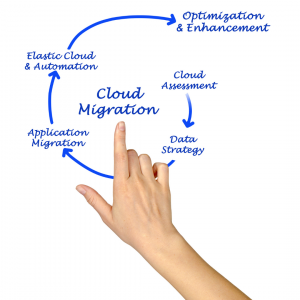A blog
When it comes to migrating to the Cloud (or any type of data migration for that matter), it’s easy for an organization to get excited about the possibilities and just dive in — but this can feel more like an expensive and painful experience than an investment. That’s why it’s important to slow down and think about what needs to take place before putting all your eggs in one big bucket. Here are some tips on how to effectively approach cloud migration.

It’s not easy moving your business to the cloud. There are a variety of things you need to think about when you’re receiving your data in the cloud and more than likely running it through an API of some kind to extract information. There are also several challenges involved when migrating to the cloud that you need to think about
Dos
Analyze your current applications
It is essential to devise a detailed strategy before migrating your business operations to the cloud. That strategy starts with deciding what to do with your current on-prem applications. It will require an in-depth understanding of your existing business challenges and future goals because not every application will need to be migrated. It depends entirely on the vision set forth by your company and what you hope to accomplish by moving to the cloud.
Get input from employees
A common mistake when moving to the cloud (and implementing any organizational change) is discussing the upcoming changes with your employees. They are the ones who can tell you which applications you NEED to migrate to the cloud. Just because your organization is paying for something does not mean that your employees are fully utilizing it.
Use a hybrid model
The public cloud has many benefits, but there are instances where an on-prem model is better suited for the job at hand. That’s why it’s crucial for businesses to have a clear understanding of their needs before adopting one or the other. The best solution is often utilizing both models – a hybrid approach – which can help protect against unnecessary costs while delivering maximum flexibility and scalability. A hybrid cloud also creates greater redundancy across data
Don’t
Making a mistake in the cloud can be costly. Here are some things to avoid when migrating to a cloud environment.
Not planning for future growth
One of the big benefits of moving to the cloud is the scalability it offers. You have access to compute resources as and when you need them, and that means you can scale up or down depending on demand.
However, if you don’t plan effectively, you may end up with an environment that doesn’t scale in a way that suits your needs. By calculating anticipated growth and accounting for spikes in demand, you’ll be able to ensure that your cloud deployment will grow with you.
Not considering costs
The cost of public cloud services is well-known – if not always well understood. However, if you don’t do your sums properly and budget for the ongoing cost of running your applications in the cloud, you could find yourself facing an unexpected bill at the end of the month. Not choosing the right platform
There are many different types of cloud platforms out there, each with its own strengths and weaknesses. You’ll need to consider these carefully before making a choice; don’t fall into the trap of assuming that one platform is suitable for all deployments just because it worked well for one application or even a number.
Migrating isn’t an easy feat, but cloud services are designed to make it a bit easier. If you consider these dos and don’ts, you will have a much smoother transition. Cloud migration can be expensive, so saving money is important to any business. This is especially for a small business that doesn’t want to pay for extra storage.
Connect us for more information






